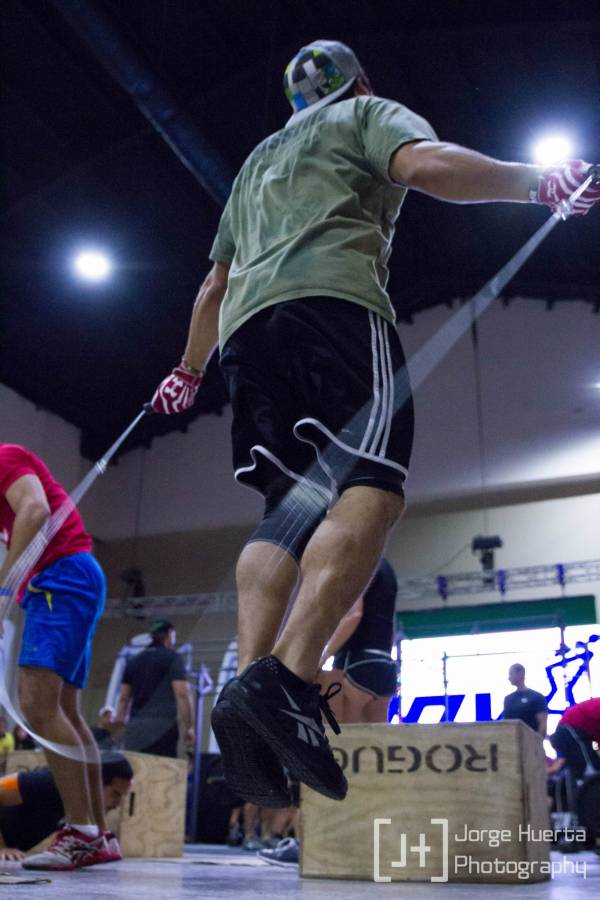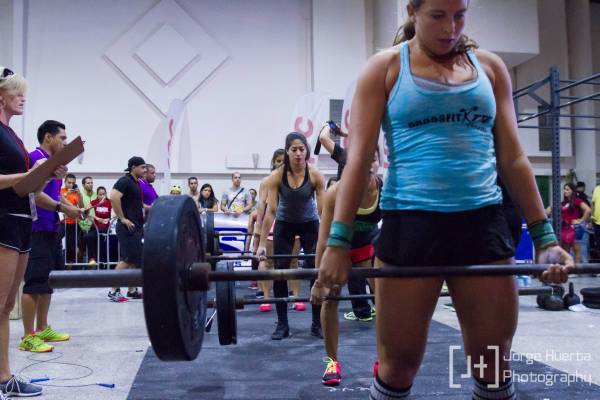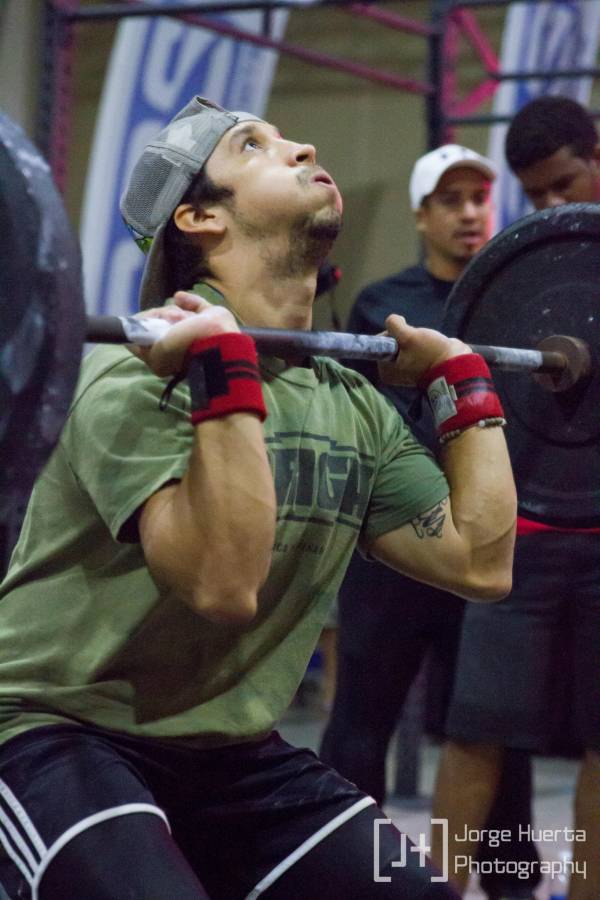It seems like a weekend doesn’t go by where there isn’t a new competition popping up in the CrossFit community. Between official CrossFit competitions and unofficial fundraisers, events, and throwdowns, there is plenty to pick from for the avid competitor and sport enthusiast. But at what cost? And is it all worth it?
What is the physical price of competing for athletes and what is the toll it takes on wallets to participate? And do we really think it is okay to release workouts just prior to competition? With so much poor programing out there, isn’t it time to let athletes know what they will be doing in advance? Or is the element of surprise more important than keeping athletes healthy and actually having them look good while competing?
I will tell you the programming out there doesn’t always put athletes in the best light, but it should. If you want to advance and promote your sport and the participants, you must highlight proper movement and proper training and preparedness – even with the “unexpected.”
When Competitions Compete
When competitions compete amongst themselves, quality is the unfortunate loser. Not only are there more competitions around the world, but the quality of programming, event planning, and overall organization is failing. Our community is now facing a quantity over quality issue that needs to be addressed.
Most competitions held by CrossFit gyms or involving CrossFit athletes will not announce the workouts until the day or evening before the event begins. Athletes blindly sign up with nothing to go on except maybe the reputation of a past event. In other words, for coaches and athletes alike, neither can be prepared for what they might encounter and by the time they learn the event is too risky or reckless, athletes are locked in.
Be Willing to Pull Out
 Coaches, for the health of your athletes, if you determine an event to be risky or reckless, then pull your clients. Demand more from the hosts. Don’t get me wrong; I completely understand the allure of competition – to be able to show up and to do anything and everything put before you. As coaches it is our job to prepare athletes for that, but unfortunately, too often we assume that others know how to program events and that is not always the case.
Coaches, for the health of your athletes, if you determine an event to be risky or reckless, then pull your clients. Demand more from the hosts. Don’t get me wrong; I completely understand the allure of competition – to be able to show up and to do anything and everything put before you. As coaches it is our job to prepare athletes for that, but unfortunately, too often we assume that others know how to program events and that is not always the case.
I see the need for variety and the element of surprise, for sure. However, smart athletes know that bad competition programming could leave them unable to participate in future events or take them away from training due to injury. These athletes really only have two options, to withdraw and lose their money (and it can be a lot) or to stay in and to compete at workouts that put them at risk.
Is It Worth It?
As a coach, I have often had to face the question, “Is it worth it?” Coaches, athletes, and programmers must consider that competitive athletes typically have long-term goals in mind (getting from the Open to Regionals to the Games) and any modifications to the athlete’s long-term programming must be researched prior to an event and adjusted for. Wise athletes are on a structured program.
In addition, injury is something every good coach and programmer avoids. We consider the big pictures for our athletes and careless events that tempt injury are not on our schedule. More than once I have given an athlete permission to sign up for an event and then as workouts were released at the last minute, we both regretted it.
The Problems in the Programming
There are certain things that are not just neglected in competition programming, but that are actually making competitors look their worst. I don’t think this is intentional, but when poor programmers throw random (and stupid) shit in there “for fun,” then athletes looking bad will happen.
So, when your masters athletes are out there with heavy Atlas stones jacking up their backs, do you still wonder why the sport of CrossFit gets a bad rap? And it isn’t the sport itself that is at fault necessarily, but rather the programmers (and I use that title very loosely, by the way). Poorly planned and reckless events – usually designed this way for the purpose of being fringe, weird, or different in order to compete with other events – are just loaded guns for skeptics to fire off on the dangers of CrossFit. The more research I do on the programmers behind these events, the more I find that most have little-to-no background in competitions, coaching, programming, running events, or even in the sport they associate themselves with. Is it too much to ask for hosts to hire an experienced programmer?
They’re Called Foundational Movements for a Reason
 The point of signing up for an event is to have the chance to win. (Sure, it’s fun, and many athletes just go for the experience, but for the unprepared even “fun” can be a terrible experience that results in a blown back, torn Achilles, or busted shoulder.) I think it is safe to assume if you are signing up for a competition and putting yourself out there, then there is a part of you that wants to compete well. But more and more events do not make winning feasible for everyone. Foundational, solid movements are forsaken for sensational, fringe ones. So I ask you, what is the winner even proving? That he or she can wing it?
The point of signing up for an event is to have the chance to win. (Sure, it’s fun, and many athletes just go for the experience, but for the unprepared even “fun” can be a terrible experience that results in a blown back, torn Achilles, or busted shoulder.) I think it is safe to assume if you are signing up for a competition and putting yourself out there, then there is a part of you that wants to compete well. But more and more events do not make winning feasible for everyone. Foundational, solid movements are forsaken for sensational, fringe ones. So I ask you, what is the winner even proving? That he or she can wing it?
I understand you need to have varied movements and the occasional twist on something is exciting, but you must be smart about it. You cannot just throw things out there for the sake of entertainment. Yes, different shows of strength and endurance are important, but there are some things that just don’t make any sense. Key body movements, body dynamics, and basic lifting will always be at the core of performance. Test that.
Programmers Need to Know What and Why
Mixing up pull and push movements in the wrong orders and at the wrong times, demanding high repetition lifts at ridiculous weights and as the athletes fatigue, the high-volume of all of the above, and then not giving clear standards to athletes or judges is a recipe for injury (and embarrassment for the event and everyone involved). But then again, if you don’t know how to program, how are you to know what is expected and what to request from athletes? At events I have attended, I have asked the organizers to explain what the task or test was for events and they could tell me nothing. I encourage all of you to do the same. Ask questions.
This is especially frustrating for lifting elements and lifters when it comes to the clean and jerk and the snatch. Are you judging athletes in these movements as weightlifters or are you judging a lift that is modified? An example in the jerk would be requiring catching under the bar versus allowing pressing the bar overhead. Maybe if you are going to call a clean a “squat clean” you can judge it by your own standards, but if you call it a “clean” then you should judge the proper lift that it is. Either way, at least let the standards be clear. Again, coaches and athletes need to ask questions, and events need to have a trained head judge on site. Everyone must be on the same page as far as requirements and standards.
The Real Cost of Competition
 To compete in the CrossFit Games you have to be able to afford to get there. Often, athletes have qualified all that way and then need to hold fundraisers to get to the final competition. On a smaller scale for more local competitions, the story isn’t that much different. Competition isn’t just a road trip. It also requires participants take time off from work and coaches away from other athletes. Then add in travel, registration fees, hotels, and food.
To compete in the CrossFit Games you have to be able to afford to get there. Often, athletes have qualified all that way and then need to hold fundraisers to get to the final competition. On a smaller scale for more local competitions, the story isn’t that much different. Competition isn’t just a road trip. It also requires participants take time off from work and coaches away from other athletes. Then add in travel, registration fees, hotels, and food.
But it seems with every competition that passes, the registration prices go up. Between gym memberships and the personalized coaching and programming that serious competitors require, the sport of fitness is becoming about a fitter wallet. Events used to be garage-gym throwdowns, anywhere and anytime just for the love of competing. I am afraid we are getting farther and farther away from the ranch with a few beers and a good BBQ where this all started.
I am all for quality and organization, but this should be the norm, not something athletes pay extra for. If you are going to host an event, offer the best equipment and the best programming, and these alone will pay off for you as more and more people want to return to your events. This is where you build your reputation. Build from the bottom up, but don’t expect people to bottom-out to get there.
Vendors’ fees are included in this discussion also. I recently saw vendors’ fees for a new local competition that rivaled booth prices at last year’s CrossFit Games. Events need to establish themselves as legit and reliable first before they start to charge an arm and a leg. For those of you running these competitions, you are asking a lot of athletes and vendors alike, so we are going to ask for the same.
 We need events that athletes can sign up for knowing they will be safe and in which they can actually be competitive. They need to know they have a chance to podium (and can look good doing it), can be pushed but not broken (or broke), and have an opportunity to find real holes in their own performance to improve on once they return home.
We need events that athletes can sign up for knowing they will be safe and in which they can actually be competitive. They need to know they have a chance to podium (and can look good doing it), can be pushed but not broken (or broke), and have an opportunity to find real holes in their own performance to improve on once they return home.
Event organizers, make your events fun and competitive, and do it wisely. If you want to grow the sport you must watch over its reputation. Make it look like something people want to be a part of and can do injury free. Less fringe and more function, less frills and more feasibility. Let’s get back to the basics and find the best at them. You need to take the time to design the event that does that – on every level.
Photos provided by Jorge Huerta Photography.






